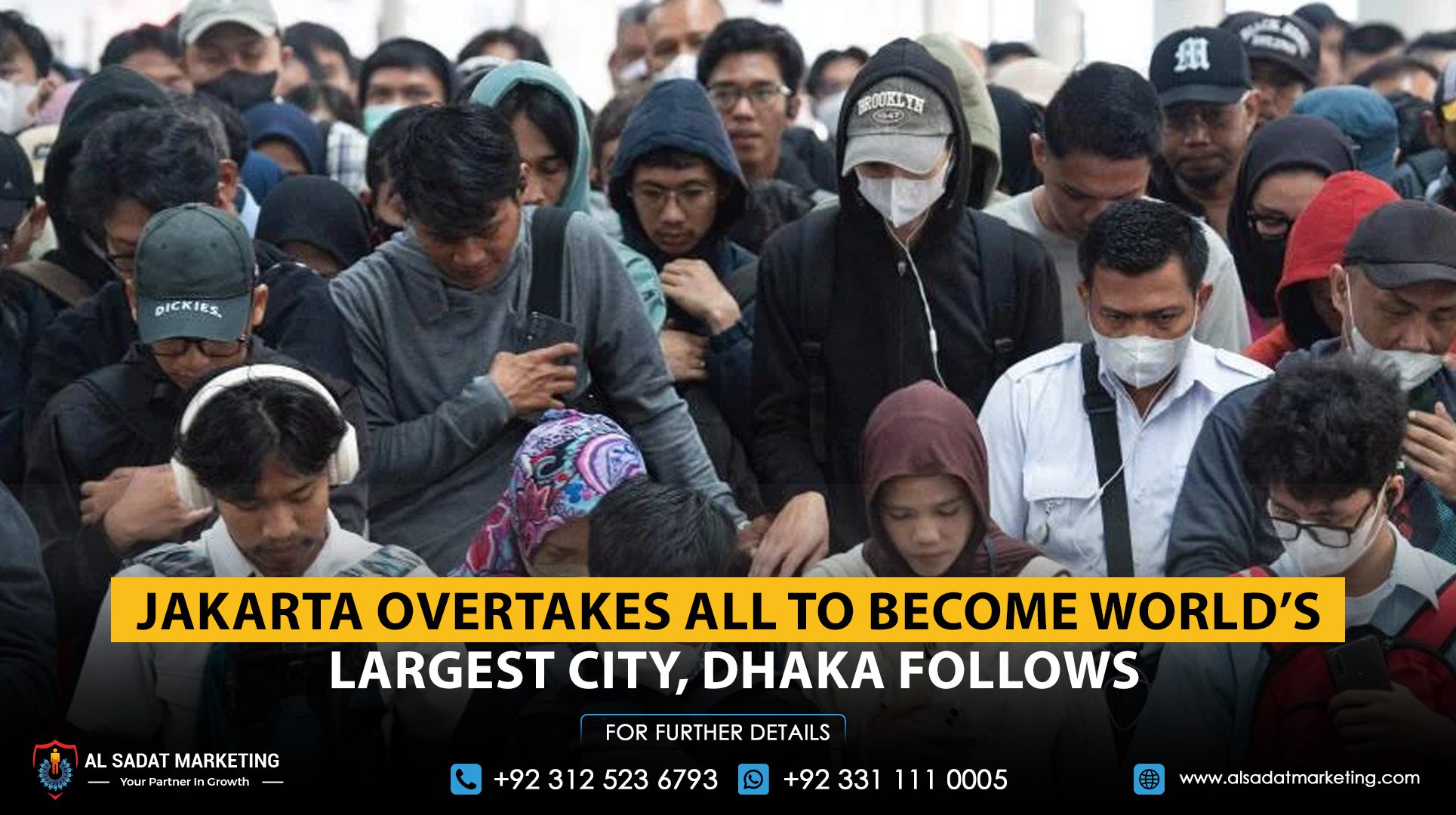Jakarta has officially become the world’s largest city with 41.9 million residents, moving ahead of Tokyo, according to a new United Nations report. Bangladesh’s capital, Dhaka, has jumped into second place with 36.6 million people — and experts say it could become the world’s biggest city by 2050.
The UN’s World Urbanization Prospects 2025 report shows that Asia now dominates global urban growth. Nine out of the ten biggest cities in the world are in Asia, including New Delhi, Shanghai, Guangzhou, Manila, Kolkata, and Seoul. Cairo is the only city outside Asia to appear in the top ten.
The number of megacities — cities with more than 10 million residents — has risen sharply to 33 today, compared to only eight in 1975.
Jakarta Faces Major Challenges
Jakarta’s rapid growth comes with serious risks. The city sits on low-lying coastal land and faces extreme flooding and rising sea levels. Experts warn that up to one-quarter of Jakarta could be underwater by 2050.
Indonesia is already moving its national capital to Nusantara in East Kalimantan, Borneo. Despite this, the UN expects Jakarta’s population to grow by another 10 million by 2050. The city is also dealing with rising living costs and social inequality, which led to protests earlier this year by low-income workers such as delivery riders and ride-share drivers.
Dhaka’s Fast Expansion
Dhaka has risen from ninth to second place due to large numbers of people moving from rural areas. Many migrate to the city for jobs or to escape environmental challenges like heavy flooding linked to climate change. Dhaka’s rapid growth is expected to continue, making it the world’s largest city by mid-century.
Other Global Highlights
• Tokyo is now the world’s third-largest city with 33.4 million people.
• São Paulo and Lagos are leading population growth in the Americas and Africa.
• Tehran is experiencing major water shortages affecting its 9 million residents.
The UN report also introduced new methods to define urban areas more accurately, focusing on city populations rather than wider metropolitan regions.










